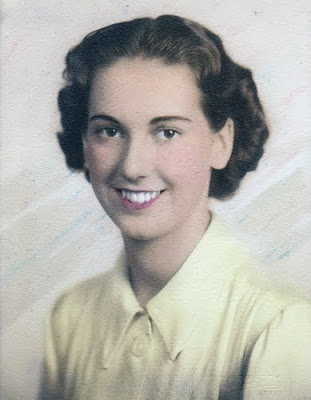
Didrik Andreas Thomsen, ca 1870
Didrik Andreas Thomsen was born on 23 June 1849 the third of the five children born to Thomas Thomassen Kalstø and Anne Didriksdatter. The family was living in Kopervik, Rogaland, Norway at the time of his birth. His brothers and sisters were: Ola Christian born 1844 and died young, Ola Christian born 1846, Jirtrud also spelled Gjertine Lisabeth born 1853, Nils born 1855. This picture was taken when Didrik Andreas was about 21 years old.
Didrik Andreas had an apprenticeship as an artist and then worked in Bergen, Norway. Oral history from his son says that he painted murals in the Bergen area although Dick did not provide locations of said murals. We do have two pencil portrait examples of his work. A self-portrait based on the photograph above and a portrait of his wife, Sigrid Berentine Serene Andersen Dahle also based on a photograph. He and Sigrid had at least four children:
- Anna born 6 April 1875
- Didrik born 3 October 1885
- Alfhild Dorothea born December 1889
- Harriet Alfhild (known as Alfhild) 3 December 1894.

Sigrid Andersen Dahle with two of her daughters.
The photograph is poor quality and has been enhanced but even so it is over exposed and does not show the faces clearly. It suggests that two of the girls were close in age and were alive at the same time. It could be the younger two girls or perhaps a fifth child born between Anna and Didrik since the living children are almost ten years apart in age.

Pencil sketch by Didrik Andreas Thomsen of his wife, Sigrid Andersen Dahle, based on photograph, dated 1900.
While washing windows in an upper apartment Sigrid fell tragically to her death on 29 June 1901. There was a police inquiry that determined it was an accident even though some questioned that verdict.
Didrik Andreas had a liaison with a Malene Dorothea Johansen, possibly one of his models, and they had an illegitimate child, Andrea Judithe who was born 4 September 1902. Oral history stories also indicate that he may have had two other illegitmate sons but no record of these children has been found to date.
I did find a Didrik Andreas Thomsen on the 1910 census for Norway that I am almost positive is the correct man although he is fudging around with his age or the census taker made an error--the day and month (23 June) are correct but the birth year is given as 1854 instead of 1849 and his place of birth is listed as Bergen instead of Kopervik, Rogaland. He is found married or living with yet another woman, Berte Olsen, born 1868 in Haus, with two daughters, Dora, born 30 April 1907, and Ragnhild, born 7 April 1910. His occupation is listed as Maler ved en møbelfabrik or a painter with a furniture maker. Would this be something like Rosemaling? There are two daughters which makes me wonder if the oral history was off a bit and his other children were these two girls instead of two sons. Oral histories can be tricky. They often have a kernel of truth but the facts can become distorted and changed over time and re-telling. Didrik Andreas was a mysterious man. Unfortunately, Grandpa Dick was not overly fond of his father and didn't mention too many details about him. Dick left Norway for America within four years of his mother's death which occurred in 1901 and did not keep in touch with his father although he did write and visit his older sister, Anna.
Didrik Andreas’s father’s family came from Nedstrand and Viksdal in Rogaland but his mother, Anne Didriksdatter was born in Flekkefjord and her family lived in Nes, Vest Agder. Her family can be traced back for many generations in Bygdebok for Nes Herred by Kaare S. Berg. I found that interesting because although it is an entirely different branch of the family, Anne came from very near where Anna Hornnes and her family lived. It is endlessly fascinating to me to unravel these tangles and wonder if perhaps some of these people knew each other when they were living. They might be surprised at the connections today.

Didrik Andreas Thomsen as an older man, ca 1905
I think I prefer the way he looks as an older man without the muttonchops and beard he was wearing as a young man. He looks pretty dapper in this picture. What do you think?






































